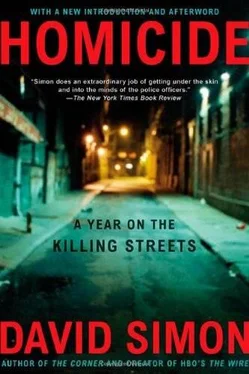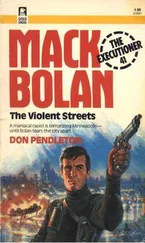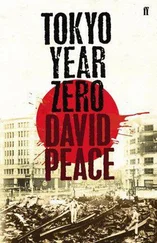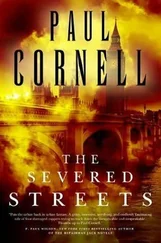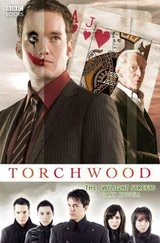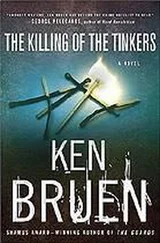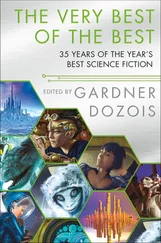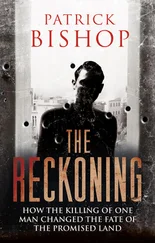Then, a week after the murder of Theodore Johnson, this widely held opinion undergoes a sudden revision when a fresh lab report arrives on Pellegrini’s desk and its contents become known to the shift.
The author of the report: Van Gelder in the trace section. The subject: black smudge marks on the dead girl’s pants. The verdict: tar and soot with burned wood chips mixed in. Fire debris, plain and simple.
Taking its own sweet time, the trace lab has finally compared the black smudges on Latonya Wallace’s pants to the samples that Pellegrini lifted from the Fish Man’s burned-out store two months earlier. The report declares the two samples to be consistent, if not identical.
What can we say? Pellegrini asks, pressing the lab people. Is it similar or is it exactly the same? Can we say with any certainty that she was in that Whitelock Street store?
Van Gelder and the others in the trace section are equivocal. The samples can be sent to the Alcohol, Tobacco and Firearms lab in Rockville-one of the best in the country-and perhaps they can do more. But generally speaking, Van Gelder explains, the smudges on the pants and the samples from the store have the same class characteristics. They are very similar and yes, they could have come from the debris in that store. On the other hand, they could also have come from another fire scene in which the debris had a similar chemical composition.
A week after the cold depression of Durham Street, Pellegrini finds himself torn between elation and despair. Nine months into the Latonya Wallace investigation, the new lab report provides the first piece of substantive evidence in the file and the only piece of physical evidence to implicate the Fish Man. But if the lab analysts are willing to say only that the two samples are very similar, then that evidence still falls within the realm of reasonable doubt. It is a beginning, but unless the ATF lab can be more definitive, it is nothing more.
A few days after the lab report arrives on his desk, Pellegrini asks the captain to authorize a mainframe computer run of incident reports dating from January 1, 1978, to February 2, 1988. The information sought is the address for every fire or arson report in the area of Reservoir Hill bounded by North Avenue, Park Avenue, Druid Park Lake Drive and Madison Avenue.
The theory is simple enough: If the lab can’t say for certain that those smudges come from Whitelock Street, then perhaps a detective, working backward, can prove that they couldn’t have come from anywhere else.
The detective obsessed with the Latonya Wallace case may seem lost to everyone else in homicide, but to Pellegrini himself, the chaos of H88021 is slowly becoming order. After eight months, the file has fresh evidence, a viable suspect, a plausible theory.
Best of all, it has some direction.
FRIDAY, OCTOBER 7
“Well,” says McLarney, admiring the board, “Worden’s back.” And back in black.
Three straight nights of midnight shift in late September brought three straight murders for the Big Man and Rick James. Two are down, and the chalkboard on the other side of the coffee room is adorned with the evidence of progress on the third case: “Any calls about a prostitute named Lenore who works Pennsylvania Avenue, call Worden or James at home re H88160.”
Lenore, the mystery whore. By all accounts, she is the lone witness to the fatal stabbing of her ex-boyfriend, who was last seen arguing with Lenore’s current beau in the 2200 block of the Avenue before falling to the ground with an unsightly hole in his upper right chest. Now, two weeks later, the current boyfriend is conveniently dead from cancer, and therefore, if the elusive businesswoman will be so kind as to come downtown and make a truthful statement, case number three will also be black. To that end, McLarney’s squad has spent the last two weeks terrorizing the Avenue hookers, riding up to question every new face and scare away customers. It’s gotten so bad that the girls are waving them off even as they open the car doors.
“I ain’t Lenore,” one shouted to Worden a week ago, even before the detective had a chance to speak.
“I know that, hon. But have you seen her?”
“She’s not out tonight.”
“Well, tell her if she’ll just come in and talk to us, we’ll stop bothering you and her both. Will you do that for us?”
“If I see her, I’ll tell her.”
“Thank you, dear.”
Straight police work, the kind that keeps you out in the city streets. No oily politicians, no treacherous bosses, no scared young cops saying they don’t know anything about the dead kid in the alley. The street gives you nothing worse than lying, thieving criminals and, hey, Worden has no complaints with that. It’s their job. And his, too.
The return to routine has allowed Worden a measure of satisfaction, not that the last three cases were exactly brimming with challenge and complexity. The first was pretty much an accidental: three teenage drug dealers in a west side rowhouse, marveling over their host’s new Saturday Night Special when it goes off with the barrel pointed at the youngest kid’s chest. The second was a Highlandtown beating, a manslaughter with a billy boy laid out in an alley behind Lakewood Avenue, dead after he fell back from a punch and hit his head on the cement. The third was the Pennsylvania Avenue stabbing, still waiting for Miss Lenore’s reappearance.
No, it wasn’t the quality of the cases that announced Worden’s return so much as the volume. Whether or not the case went down, the quality was always there with the Big Man; Monroe Street, in fact, was probably his best work in a long while. But a year ago, Worden had been nothing less than a machine, and McLarney remembered that time like an athlete remembers a championship season. Back then, the squad pretty much operated on the same principle as that cereal commercial: Give it to Worden. He’ll eat anything. Go ahead, give him this one, give him another, and then put him on the file that Dave Brown and Waltemeyer are still struggling with. See? He likes it.
This year has been very different. Monroe Street, the Larry Young business, the open murders from March and April-the year had unfolded as an agonizing exercise in frustration, and by summer there was nothing to suggest that Worden’s losing streak had an end.
In late August and early September, the cold, hard slap of reality was a fourteen-year-old shotgun victim by the name of Craig Rideout, stretched out in the early morning light on a Pimlico lawn, dead for hours before anyone found the body or called a cop. Worden labored for days to trace the shooting back to a crew doing shotgun robberies in the Northwest using a red Mazda. Talking to informants in his old district and checking other shotgun robbery reports eventually turned up one badass in particular, a non-taxpayer with a Cherry Hill address and a sheet that included arrests for armed robbery. Not only did Worden tie the kid to a red Mazda that had been seen all over the Northwest, but he learned that the boy was spending a lot of time with people around lower Park Heights near the murder scene.
For a couple of nights, Worden sat on the kid’s house, waiting for anything that looked like a robbery crew to assemble near that Mazda. With no physical evidence, Worden could only hope that his man would go back out on the street with the shotgun to try another robbery. But then an inexplicable act by another detective blew the case apart: Two weeks after the Rideout murder, Worden came into work on a four-to-twelve shift and learned that Dave Hollingsworth, the detective on Stanton’s shift handling another shotgun murder in the Northwest, had gone out to Cherry Hill and interviewed his suspect. Immediately the shotgun robberies in the Northwest came to an abrupt halt. No more red Mazdas, no more sightings of his suspect up around Park Heights.
Читать дальше
